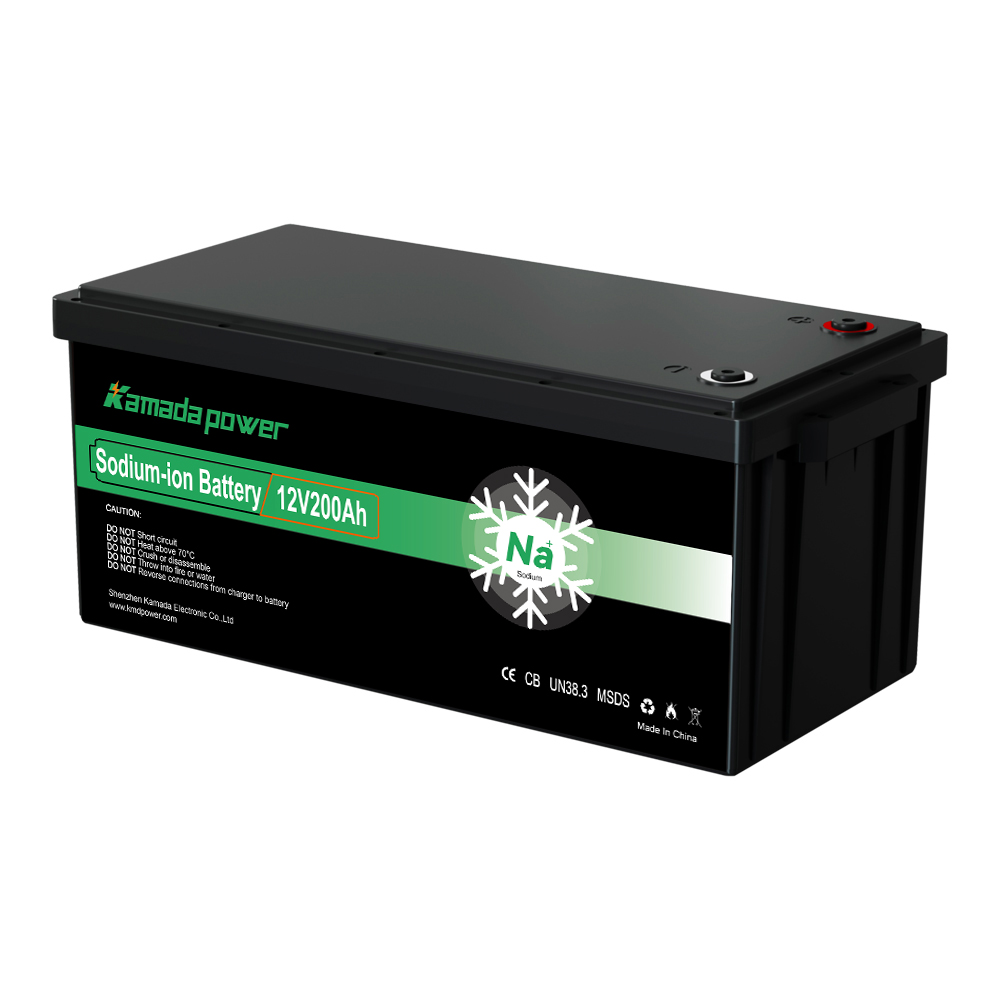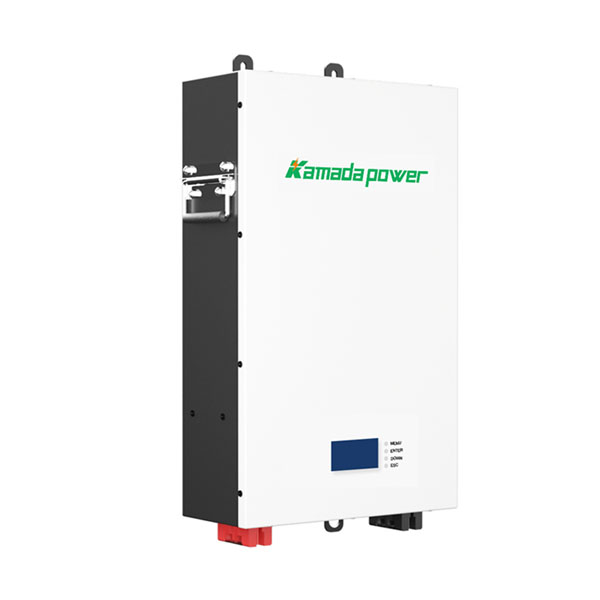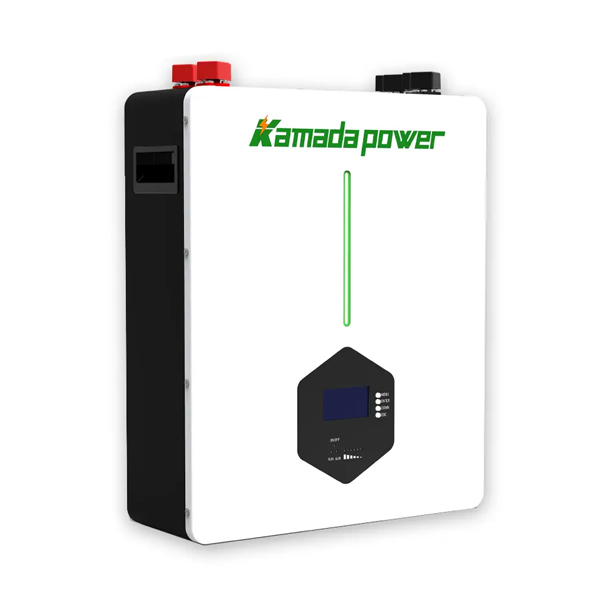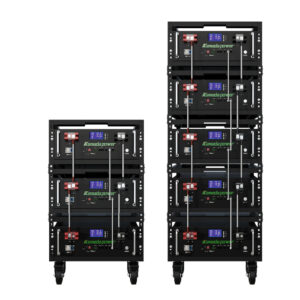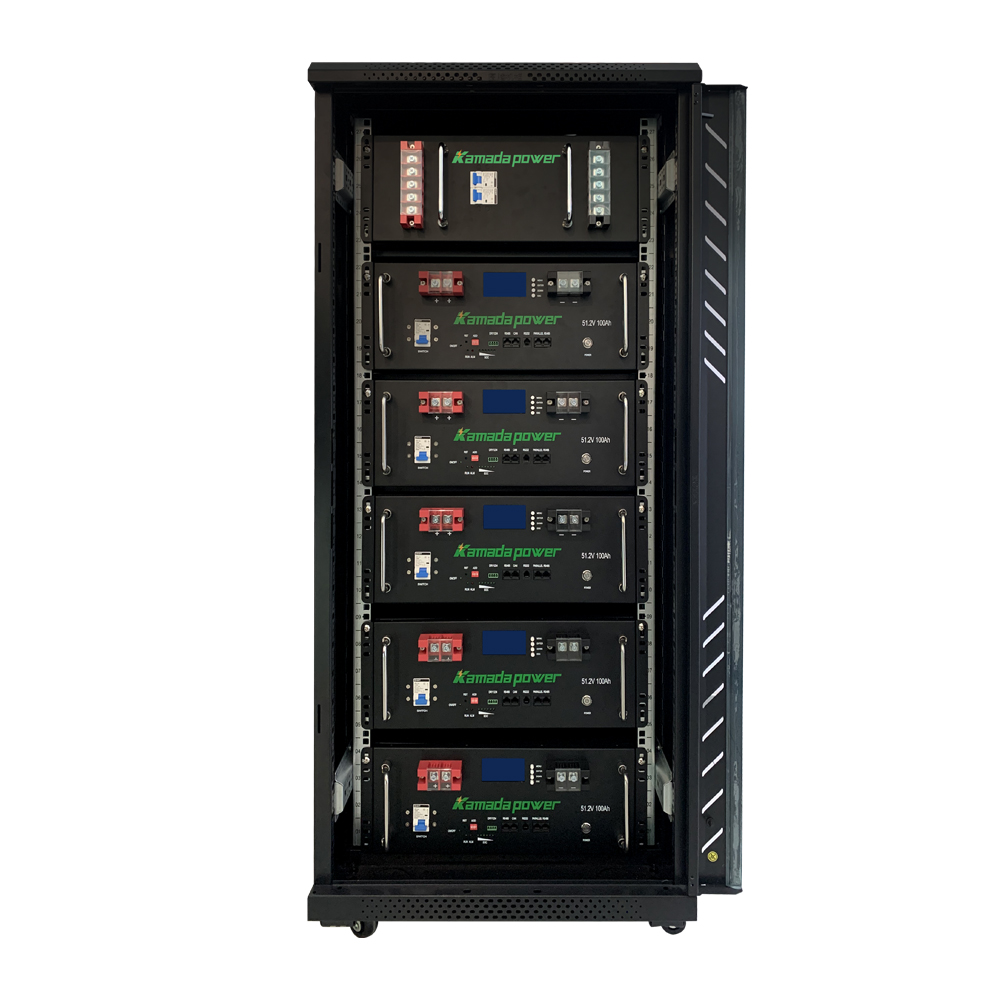The uninterrupted operation of server infrastructure and crucial IT assets stands as a top priority, particularly in the face of main power failure. For equipment housed in racks—those tall cabinets holding your IT gear—reliable backup batteries are essential and reside directly within the rack.
Server Rack batteries, however, come in different physical sizes. You’ll typically encounter two common heights: 3U and 4U. Choosing between them significantly impacts backup power capacity and rack space utilization.
Potenza Kamada As a batteria per rack server expert, this guide breaks down the key differences to help you determine the best fit for your setup.
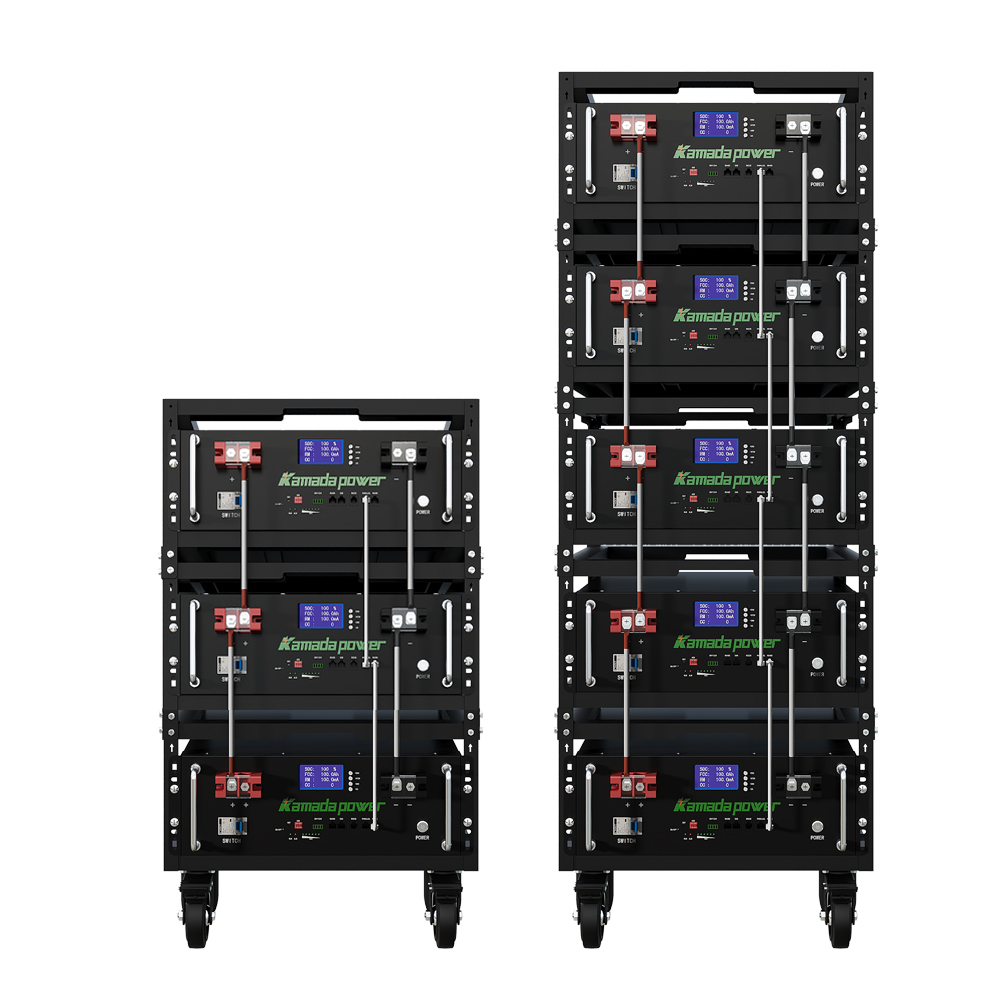
Kamada power server rack battery
Understanding Rack Units (U)
The standardized height for equipment in a server rack is defined by the Rack Unit (U). A server rack is a cabinet with standardized slots.
Definition: One U equals 1.75 inches (44.45 mm).
- A 3U battery needs three vertical rack units, about 5.25 inches high.
- A 4U battery requires four units, around 7 inches high.
Understanding U size is crucial because usable rack space is always a premium. The battery unit’s size directly impacts available vertical space. It also influences internal battery unit design, impacting potential cell capacity and thermal management.
3U vs 4U: Core Technical Differences
Size and Rack Space
The most obvious difference is height: 4U is taller than 3U, allowing fewer 4U units vertically in a rack. The larger 4U box offers more internal volume, beneficial for design flexibility.
Capacity & Power Density
- Capacità: Total energy stored (Ah/kWh). A larger 4U unit typically holds more cells, offering higher total capacity for longer runtimes.
- Power Density: Measures power per rack unit. While 4U has higher total capacity, well-designed 3U units can be surprisingly potent for their size (high power density per U).
Cooling and Thermal Management
Battery health and performance are highly sensitive to temperature. More internal space in a 4U unit typically facilitates better airflow and allows for more robust cooling component integration, helping manage heat effectively. Effective cooling is required for both, but optimal design can be easier with the larger internal volume of a 4U, especially under heavy load.
Weight & Installation
Higher capacity usually means more weight; 4U batteries are generally heavier than 3U units. Installing heavier 4U units is more challenging, often requiring more people or specialized lifting equipment for safety.
Connectivity & Monitoring
Battery units connect to the UPS and system monitoring. Both sizes offer connection points. Integrated systems monitor battery status and health (e.g., BMS). Extra space in 4U può allow for more accessible ports or sophisticated internal monitoring.
Choosing the Right Size: 3U or 4U?
Your decision hinges on aligning battery capabilities with operational needs and environment realities. Consider these factors:
Why Choose 3U?
- Rack space is severely limited.
- Only short duration backup is needed.
- Deploying in multiple smaller locations.
- Consistency with other 3U rack equipment.
Why Choose 4U?
- Extended backup runtime is required.
- Consolidating capacity into fewer units.
- The operating environment demands better thermal management.
- Planning for future expansion.
Battery Chemistry: Li-ion vs. VRLA
Beyond size, the battery chemistry inside significantly impacts performance, lifespan, weight, and cost.
Lithium-ion (Li-ion)
Li-ion batteries (like LFP) are lighter and more energy-dense than traditional Lead-Acid. Higher energy density allows more capacity in compact sizes (like 3U). They offer significantly longer lifespan, require less routine maintenance, and feature an integrated BMS for monitoring.
VRLA Lead-Acid
VRLA (Valve Regulated Lead-Acid), including AGM/Gel, is the standard traditional rack technology. Compared to Li-ion, VRLA is heavier, less energy-dense, and takes more space/weight for same capacity. Main advantage: Lower upfront cost. However, VRLA generally has a shorter lifespan (particularly affected by heat and deep discharge) and requires more hands-on maintenance compared to Li-ion with advanced BMS. Lower density/weight capacity means high capacity VRLA often needs larger footprints (4U+) than Li-ion.
Installation, Maintenance, and TCO
Installazione
Weight is key for installation. Heavier 4U units may require more help or lifting equipment than 3U units.
Manutenzione
VRLA requires more routine, hands-on maintenance. Li-ion with BMS offers more automated monitoring and less manual intervention.
Total Cost of Ownership (TCO)
Analyze Total Cost of Ownership (TCO), not just upfront price. Includes:
- Initial purchase price.
- Installation expense.
- Maintenance labor/costs.
- Cost/frequency of replacement.
VRLA: lower initial cost, potentially higher TCO (shorter life, more maintenance). Li-ion: higher initial cost, potentially lower TCO (longer life, less maintenance).
Conclusione
3U vs 4U batteria per rack server choice is critical. Size impacts rack space and max unit capacity. Also evaluate chemistry: Li-ion (energy-dense) vs. VRLA (traditional, lower initial cost).
Your final decision aligns with operational needs:
- Available rack space
- Required backup runtime/capacity
- Environmental conditions (especially temp)
- Budget (TCO) vs. long-term cost
- Future expansion plans
Review technical specs thoroughly. Consult experts if unsure to ensure the best fit. Choosing the right size and chemistry is a strategic decision for optimizing performance and ensuring business continuity.
Potenza Kamada Server Rack Battery manufacturers in China, specializing in custom server rack batteries. Contatto kamada potenza. Get Quotation.
FAQ
Q: Can 3U and 4U batteries be mixed within the same backup power system?
A: Generally, no. Mixing batteries of different sizes, capacities, models, ages, or chemistries within the same backup string is typically not recommended due to performance and safety risks. Best practice dictates using identical batteries throughout a single backup string for optimal performance and reliability.
Q: Does a 4U battery sempre offer longer runtime than a 3U?
A: Not necessarily. While 4U units generally accommodate more total capacity, a high-capacity 3U Li-ion battery might offer similar or longer runtime than some 4U VRLA models. Compare specific Ah/kWh ratings and published runtime charts for your load.
Q: How does heat affect 3U vs 4U batteries differently based on their size?
A: High temperatures harm all batteries, speeding aging. While size itself doesn’t change chemistry sensitivity, a larger 4U potrebbe offer more internal space for better cooling than a dense 3U. Effectiveness varies by model’s thermal design.
Q: Is installing a 4U battery significantly harder than a 3U?
A: Yes, primarily due to weight. Heavier 4U units are more challenging to lift/position safely and often require more help or specialized equipment than 3U units.
Q: What’s the main advantage of choosing a Lithium-ion battery in a 3U size?
A: Maximizing capacity in limited rack footprint. Li-ion’s superior energy density allows significantly more Ah/kWh capacity in a 3U unit than a VRLA of the same size, ideal when rack space is limited but substantial runtime is needed.


